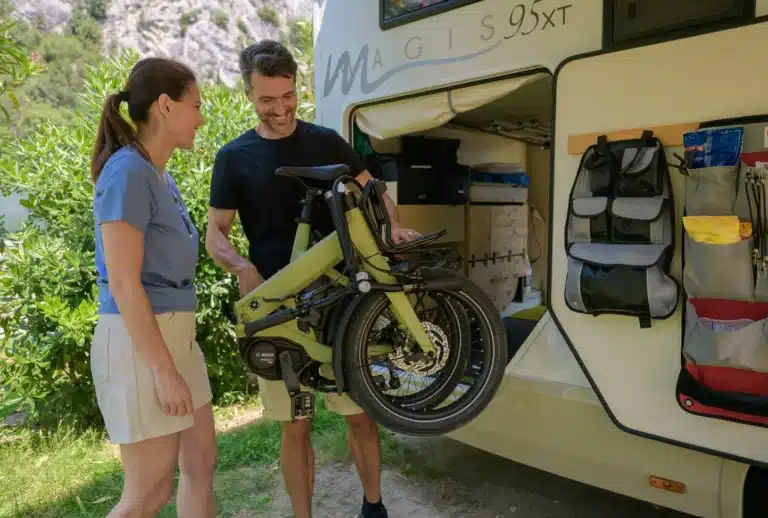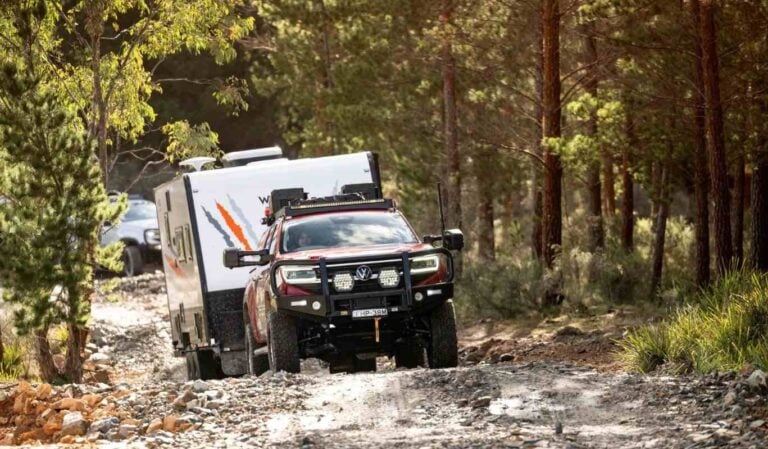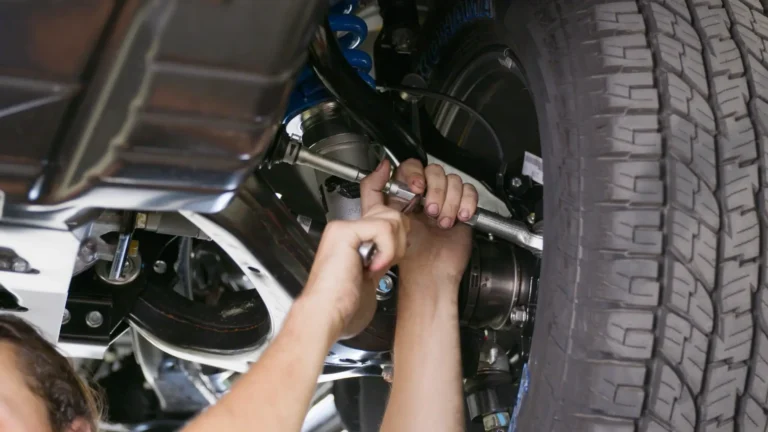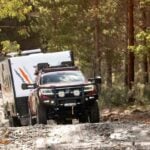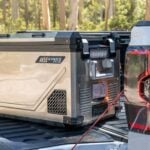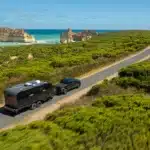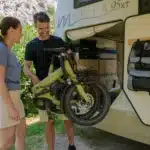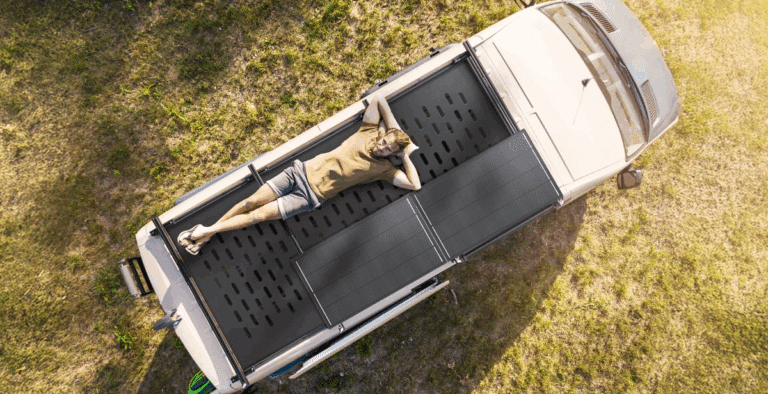
Choosing the right solar panels for your RV is like buying a pair of shoes. There are many brands and styles on the market and your best option depends on how you plan to use them, where you want to take them, and the performance you require. A weekend getaway in a rooftop tent, powering a couple of phones and lights, has a much smaller power demand than an extended off-grid stay in a bells-and-whistles caravan. Here are the key things to consider when weighing up the best solar panels for your RV.
Energy demand
There’s no point dropping several thousand dollars on a sophisticated solar system if you’re a caravan-park camper and spend most of your away time plugged in to 240V power. One 200W solar panel, coupled with a 100Ah lithium battery, will keep the lights running and phones charged on an occasional overnighter between caravan parks. If off-grid camping is more your jam and you like to bring your creature comforts with you (hello, coffee machine), then your power demands are much greater. About 800W of solar with a 400Ah lithium battery bank is a good start.

To ensure you don’t cut yourself short, you must first assess your power needs. Do an audit of all the electrical appliances and devices in your RV, noting their wattage (power draw), multiplied by the estimated number of hours usage in a day. Also consider the time of day the appliances are used. An induction cooker run at midday when the sun is beating down will be less of a drain on your power reserves than cooking after dark, when the battery is not receiving charge. When you have an idea of your daily watt hour usage, you can determine the type and size of the solar system you need, including battery storage, solar regulator and inverter.
Remember, solar is fickle and your ability to recharge your batteries is impacted by many variables, including weather conditions, efficiency, load and energy loss. Geography also affects solar generation. Useable sun hours can vary in Australia from eleven hours in Karratha to just five hours in Hobart.
Portable versus fixed
Solar panels come in two main styles – rigid/fixed, which are mounted to the top of your caravan or camper, and portable, which can be moved and packed away when not in use. Rigid panels have many advantages over portable. They are durable, long-lasting, secure and always charging (so long as the sun is shining). Rigid panels also require no storage or set-up after initial installation. The biggest downside is their limited flexibility for sun exposure. It’s not practical to move your RV around a campground to chase the sun in a way that’s possible with portable panels. Rooftop solar is consequently more vulnerable to shading, which can greatly reduce power output (more on this later).
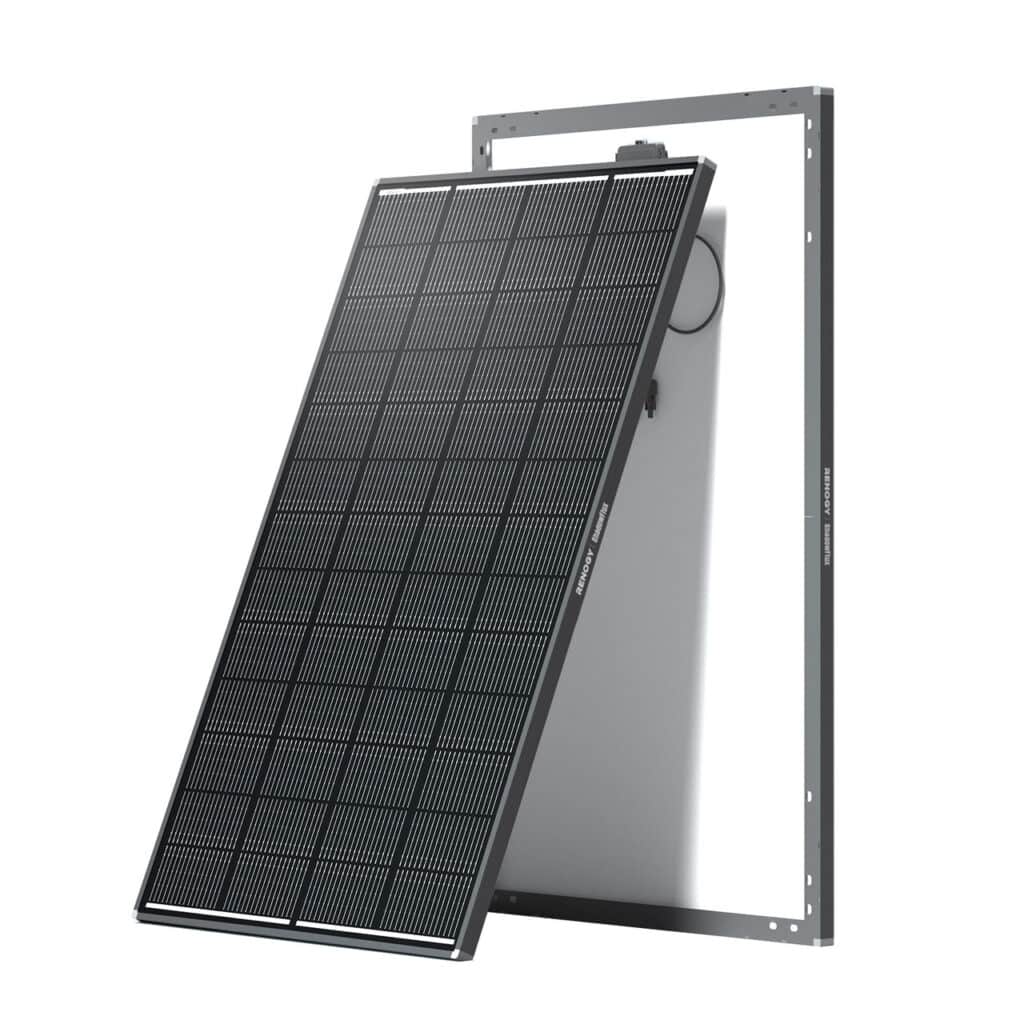
The biggest benefit of portable solar panels is their flexibility. You can move, tilt and adjust portable panels for optimum sun exposure throughout the day. Depending on the style of portable panels you have, this might mean setting them beside your RV in the morning, lying them flat in a clearing in the middle of the day, or resting them against your windscreen in the late afternoon. Portable solar panels are typically foldable or rollable and are ideal for small or temporary camping setups. While they do require storage when not in use, most are compact and lightweight.
If you want the benefits of a rigid system, with the flexibility to follow the sun, a hybrid solution (fixed and portable) is a good option. This enables you to top up the batteries from an alternative solar source when the rooftop panels on your RV are in full or partial shade. It’s also a good supplementary power feed on cloudy days or during peak electricity demand.
Combatting shading
If you don’t want to double up on your solar input, the team at Renogy has developed a way of improving the performance of rigid solar panels when partially shaded. The problem with traditional solar panels is that even a small area of shading – from a leaf or even bird poo – can dramatically affect power output. The Renogy ShadowFlux 200W Rigid Solar Panel uses anti-shading technology and N-Type cells to maximise output in partial-shade conditions. This shade-tolerant design means the panel can maintain 65 per cent of power output when one quarter of the surface is in shade.
With traditional solar panels, the smallest amount of shading can sometimes wipe out the entire panel.
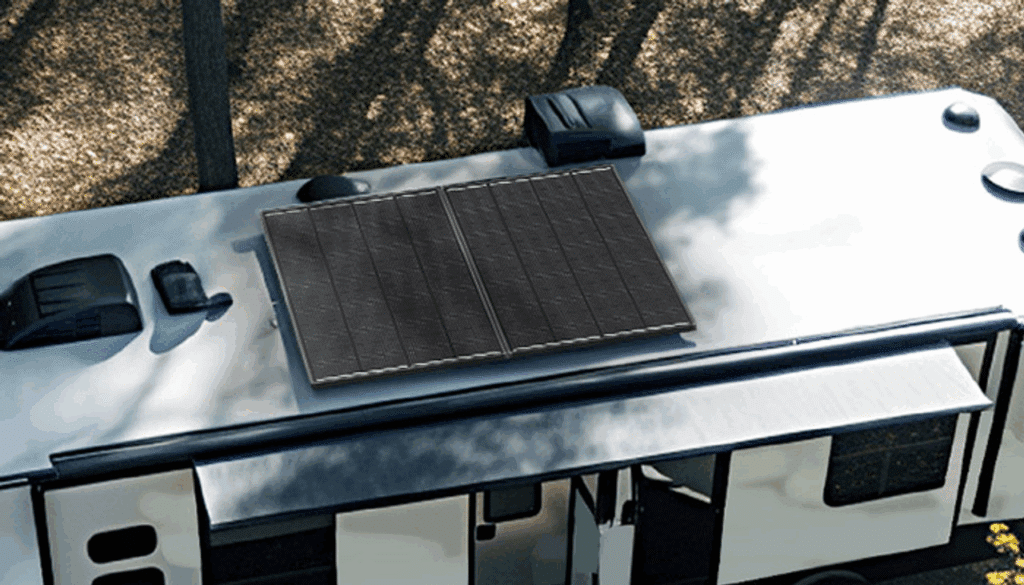
The solar panel lingo
When researching the best solar panels for caravanning and camping, the three types you will come across again and again are monocrystalline, polycrystalline and amorphous. All use photovoltaic silicone cells to convert sunlight into energy. It’s how they do it that differs. Rigid panels typically use ‘mono’ (single-crystal) cells and ‘poly’ (multiple-crystal-fragment) cells. Mono panels, like the REDARC 200W black frame panel, are more efficient at converting sunlight into electricity, resulting in a higher power output for the same footprint as a poly panel. The trade-off is cost. Monocyrstalline panels are more expensive. If you have plenty of room on the roof for solar, polycrystalline panels, like the Victron 270W, are a more economical option.
Amorphous (thin film) panels are constructed from a fine layer of silicon for enhanced flexibility and storage. Compact and lightweight, they are commonly used in foldable panels and portable solar blankets, like the REDARC 112W Solar Blanket. These blankets are expensive but work better in low light than their monocrystalline and polycrystalline cousins and are are more heat resistant. However, they need twice as much surface area to generate the same energy output.
What do you value more? The flexibility of a solar blanket or the durability of a rigid panel that’s vulnerable to shading? Or a combination? The choice is yours.



